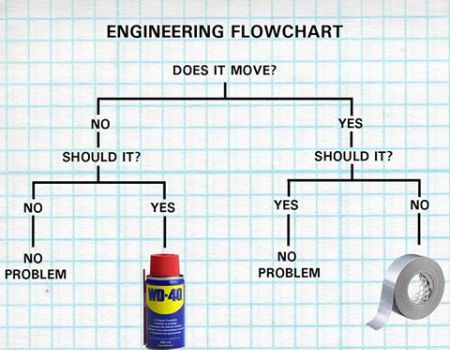
Making Movement Better: Duct Tape or WD-40?
It’s often been said that anything can be fixed with duct tape and WD-40. And, as a guy with extremely limited handyman skills, I really like this flowchart.

Source: https://laughingateverydaylife.com/2016/07/duct-tape-vs-wd40/
While this might seem like a dramatic oversimplification with respect the human body, I think there are actually some noteworthy parallels. To prove this, let’s take a look at a study my buddy, Mike Reinold, co-authored back in 2008. While they looked at range of motion changes in professional pitchers after an outing, the findings of the study that I always keep coming back to have more to do with the absolute range of motion numbers in the data set (moreso than the changes). Take a look:
Looking at the mean shoulder total motion pre-throwing, MLB pitchers averaged about 191 degrees. However, when you look at the standard deviation of 14.6 degrees, you’ll see that there were guys down around 175 degrees (very hypomobile or “tight”), and others up around 206 degrees (very hypermobile or “loose”).
Speaking very generally, the tight guys need more WD-40 (range of motion work), and the loose guys need more duct tape (stability training). Now, here’s what you make your mark as a coach: identify the exceptions to this rule.
For example, when you have an otherwise “tight” guy who comes back from a long season in with a significant range of motion increase at a joint, it could mean that he’s developed instability (e.g., blown out a ligament). Or, maybe you see an otherwise “loose” guy who has lost a considerable amount of range of motion, it could mean that he’s really hanging out in a bad pattern, developing musculotendinous shortness/stiffness that “overpowers” his ligamentous laxity. Or, he might be really out of alignment, or have developed a bony block.
Identifying outliers – exceptions to the rules – is a crucial part of evaluation success and subsequent programming. As I’ve often said, don’t just focus on average.
Speaking of lessons to be learned in managing overhead throwing athletes, education and individualization are key components of how we roll out our Summer Collegiate Elite Baseball Development Program. You can learn more HERE.



